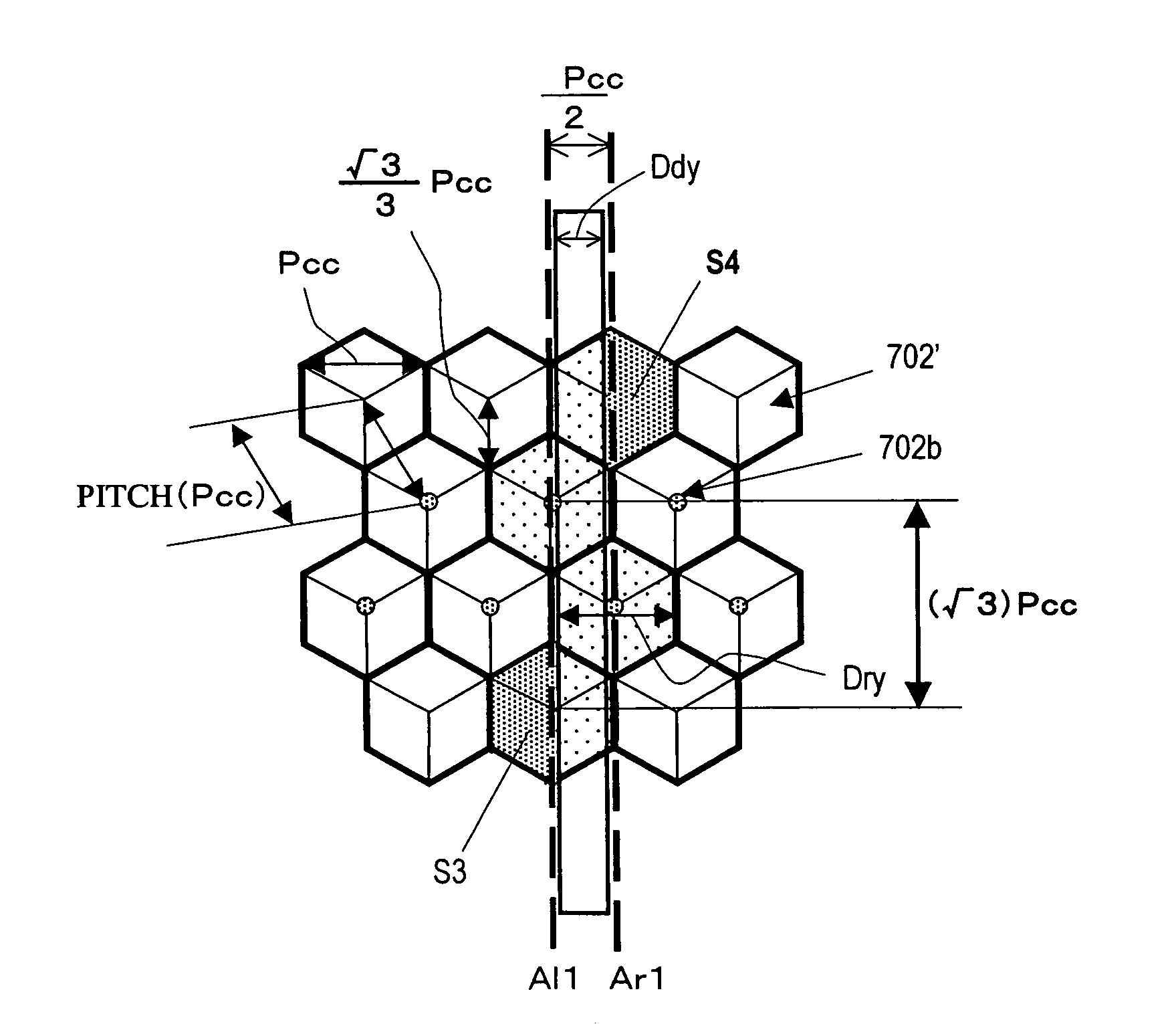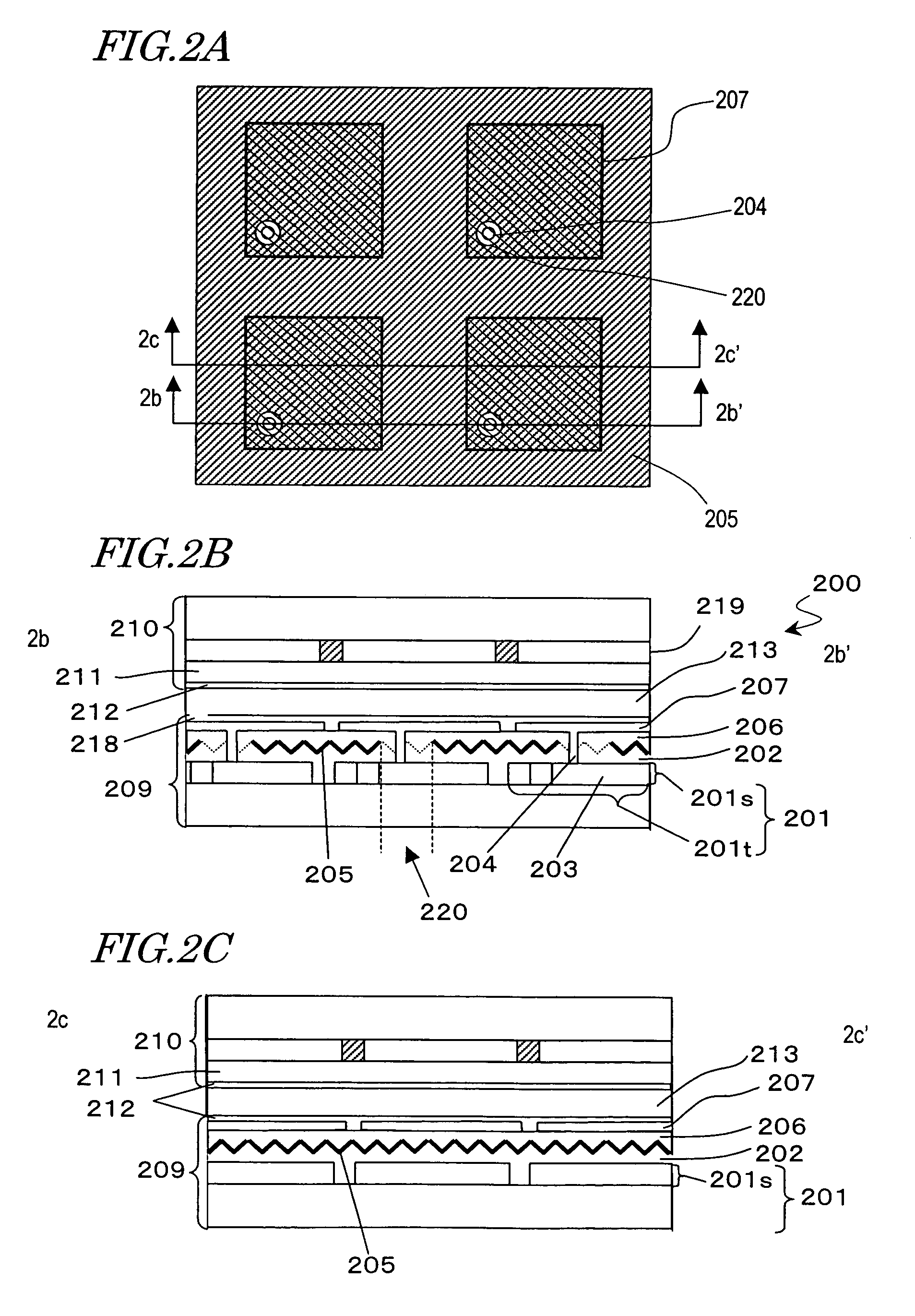Reflection type display device and method with pixel electrodes having predetermined dimensions and relationships to each other as to gap width therebetween on both short and long sides and pitch of cubic corner cubes
a display device and pixel electrode technology, applied in non-linear optics, instruments, optics, etc., can solve the problems of reducing the aperture ratio, lowering applying this technique, etc., to improve the aperture ratio, improve the efficiency of light utilization, and stabilize the alignment of liquid crystals
- Summary
- Abstract
- Description
- Claims
- Application Information
AI Technical Summary
Benefits of technology
Problems solved by technology
Method used
Image
Examples
first embodiment
[0073]Hereinafter, a first embodiment of the reflection-type LCD according to the present invention will be described.
[0074]FIG. 4A is a plan view showing the structure of a rear substrate (TFT-side substrate) 300 in the reflection-type LCD of the present embodiment. FIG. 4B is a cross-sectional view taken along line 4b-4b′ in the plan view of FIG. 4A.
[0075]The rear substrate 300 includes the following elements which are disposed in this order on a substrate 301: an active switch layer 301s; an insulating layer 307; a reflective layer 308; a planarization resin layer 309; and pixel electrodes 310. In the present embodiment, the active switch layer 301s includes a plurality of thin film transistors 301t. Each thin film transistor 301t includes, for example, a gate electrode 302, a gate insulative film 303 covering the gate electrode 302, a semiconductor layer 304 formed on the gate insulative film 303, a source line and source bus 305, and a drain electrode 306. Although the thin fil...
second embodiment
[0155]Hereinafter, a reflection-type display device according to a second embodiment of the present invention will be described.
[0156]FIG. 13A is a plan view showing the structure of a rear substrate (TFT-side substrate) 400 in the reflection-type LCD of the present embodiment. FIG. 13B is a cross-sectional view taken along line 13b-13b′ in the plan view of FIG. 13A.
[0157]The rear substrate 400 has a similar structure to that of the rear substrate 300 which has been described with reference to FIGS. 4A and 4B. However, the rear substrate 400 differs from the rear substrate 300 in that the insulating layer 407 has a diffuse reflection configuration rather than a retroreflective configuration, and the reflective layer 408 has scatter reflection characteristics rather than retroreflection characteristics.
[0158]The rear substrate 400 of the present embodiment can be formed by a method described below, for example.
[0159]First, a TFT substrate is formed by using a method similar to that w...
PUM
| Property | Measurement | Unit |
|---|---|---|
| diameter | aaaaa | aaaaa |
| diameter | aaaaa | aaaaa |
| gap width | aaaaa | aaaaa |
Abstract
Description
Claims
Application Information
 Login to View More
Login to View More - R&D
- Intellectual Property
- Life Sciences
- Materials
- Tech Scout
- Unparalleled Data Quality
- Higher Quality Content
- 60% Fewer Hallucinations
Browse by: Latest US Patents, China's latest patents, Technical Efficacy Thesaurus, Application Domain, Technology Topic, Popular Technical Reports.
© 2025 PatSnap. All rights reserved.Legal|Privacy policy|Modern Slavery Act Transparency Statement|Sitemap|About US| Contact US: help@patsnap.com



